![]()
The Sacred Feminine Today
"The ancient Gnostic gospels were excluded from the Christian canon because they argued salvation through spiritual knowledge rather than the teaching authority of any church. And they often gave this a feminine cast, says Katherine Jansen, an associate professor of history at Catholic University in Washington, D.C.”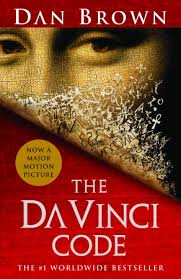
The Sacred Feminine Today
Llewellyn Vaughan-LeeSufi teacher and author
Posted: 03/ 7/2012 8:00 pm
Today there is a resurgence of interest in the sacred feminine. The immense popularity a few years ago of Dan Brown's The Da Vinci Code spoke not just to our enjoyment of a good thriller but also to the mystery of the divine feminine in Western culture, which is the real thread of the book's chase, from the enigmatic smile of the Mona Lisa to the search for the grail and the heritage of Mary Magdalene. We know now how the feminine mysteries were present in Greek culture and myth, as imaged in the story of Persephone, and enacted for more than 2,000 years in the initiations at Eleusis. In the early Christianity women had spiritual equality, and the significance of Mary Magdalene, the disciple whom Jesus loved more than others, being the first to see the risen Christ, points to the esoteric significance of the feminine. We have also learned how the power of the sacred feminine was repressed by the Church fathers, and Mary Magdalene purposely misidentified as a prostitute.
As we awaken from the repressions of the patriarchy we need to reclaim the sacred feminine both for our individual spirituality and for the well being of the planet. Our ecological devastation points to a culture that has forgotten the sacredness of the earth and the divine mother, as well as denied the feminine's deep understanding of the wholeness and interconnectedness of all of life. And our individual life, so often caught in addictions and starved of real meaning, has a hunger to reconnect with the soul, which has always had a feminine quality. And linking our own journey and that of the world is the ancient feminine figure of the World Soul, the Anima Mundi, the spiritual presence within creation.
So what does it mean to reclaim the sacred feminine? How can we feel it in our bodies and in our daily life? Every woman knows this mystery in the cycles of her body, which are linked to the greater rhythms of life, the cycles of the moon. And she feels it in a calling to reconnect with the power and wisdom she carries within her, a deep knowing that is not found in books but belongs to her very nature. The feminine carries a natural understanding of the interconnectedness of life, how all the parts belong together. She instinctively knows how to respond to the needs of her children, how she feels for their well being even when they are not physically present. And in her body she carries the greatest mystery, the potential to give birth: to bring the light of a soul into this world.
The feminine is the matrix of creation. And yet we have forgotten, or been denied, the depths of this mystery, of how the divine light of the soul creates a body in the womb of a woman, and how The Mother shares in this wonder, giving her own blood, her own body, to what will be born. Regardless of whether an individual woman has the physical experience of giving birth, she shares in this primal mystery and is empowered by it. Yet our culture's focus on a disembodied, transcendent God has left women bereft, denying them the sacredness of this simple mystery of divine love.
What we do not realize is that this patriarchal denial affects not only every woman, but also life itself. When we deny the divine mystery of the feminine we also deny something fundamental to life. We separate life from its sacred core, from the matrix that nourishes all of creation. We cut our world off from the source that alone can heal, nourish, and transform it. The same sacred source that gave birth to each of us is needed to give meaning to our life, to nourish it with what is real, and return us to a relationship with the wholeness of life.
Of course men also have a need to relate to the sacred feminine, to be nourished by her inner and outer presence. Without the sacred feminine nothing new can be born, and we see around us the sad plight of a masculine culture destroying its own ecosystem, unable to even agree on the steps needed to limit global warming. We all need to reclaim the living power and transformative potential of the sacred feminine, to feel her connection to the soul and the earth. And we desperately need the ancient wisdom of the soul of the world to help us at this time of global crisis. Many times before the world has been through an ecological crisis, and the world soul carries within her the memories and wisdom we need. But if we remain cut off in a mindset that sees this a problem that we need to fix with the same masculine attitude that has caused the problem, we will just compound the crisis. Only through working together with the sacred feminine can we heal and transform the world. And this means to honor her presence within our bodies and our soul, in the ground we walk on and the air we breathe.
The Sacred Feminine Today
Llewellyn Vaughan-Lee, March 7, 2012
Llewellyn Vaughan-Lee has written about the feminine and the role of women in our present time in "The Return of the Feminine and the World Soul.”
LodroZangmo1011
01:53 PM on 03/10/2012
"I so much agree with this article. All our attempts at saving our beautiful planet will be futile until we reclaim our sacred connection to life that we seem to have lost or is buried beneath our busy lives, all our accumulation of so much stuff, so much striving for what has little meaning. We forget we are mere guests on this Earth for a short time and that it would be good to behave as 'guests' and not leave a wake of chaos and mess behind when we depart. I appreciate Llewellyn Vaughan-Lee's words that remind us of the qualities needed to engage life, appreciating all the beauty of this planet, one that awakens our interconnectedness and wholeness. Thank you for reminding us to honor the feminine and call upon those qualities now when they are so needed.”
Julia Gamradt
02:53 PM on 03/09/2012
"This article speaks to a deep need in us, both women and men, to remember the sacred feminine. When the author says, "Our ecological devastation points to a culture that has forgotten the sacredness of the earth and the divine mother, as well as denied the feminine's deep understanding of the wholeness and interconnectedness of all of life.”it hits a very painful wound. And I wonder how many of us are really aware of the innate but simple power in Remembering the Sacred in Life. If you remember life is sacred, you make different choices, you live differently in all the little ways, and sometimes big ways of life. And you relate with fresh eyes. Not the just seeing the gray distractions and ever-present divisions that abound, but what is present NOW, if we can but remember. This piece again is a precious reminder, and such a rare voice. It is most needed.”
Eladevi
10:26 AM on 03/09/2012
"The most important feminine power is the sacred substance within our bodies.We don't have to do any practices to have it, it is present already. And all we need to 'do' is to be aware of this substance , and it heals by flowing back into the world. We as women are the matrix, the seeds of creation. This creation, this earth, this world is what we need to be nourishing NOW. Healing creation will naturally and easily occur and flow from this 'milk of human kindness.' And it is just that simple. Just the understanding itself tears the veil and the truth flows through...Thanks Llewellyn, for being so crystal clear.”
Anna Florentine
08:20 AM on 03/09/2012
"It is International Women's Day and it is also full moon today. This is beautifully synchronized. Also this article.
The moon holds a mystical place in the history of human culture and has always been the primary symbol for female energy. As the pull of the moon affects the waters of the world, so does its motion affect the body of woman. Nowdays, in the "modern world" women bodies are out of sync with the moon cycle and their spirits have forgotten the meaning of such connections. "Women carries a natural understanding of the interconnectedness of life,how all the parts belong together.” How true if feels! And this is not outdated knowledge, but a forgotten one. As Llewellyn Vaughan -Lee says here: And yet we have forgotten, or been denied, the depths of this mystery.' And he continue to say in words rarely heard:
'Regardless of whether an individual woman has the physical experience of giving birth, she shares in this primal mystery and is empowered by it. Yet our culture's focus on a disembodied, transcendent God has left women bereft, denying them the sacredness of this simple mystery of divine love.... When we deny the divine mystery of the feminine we also deny something fundamental to life.'
This is a very deep truth that needs to be remembered.”
simplevoice
05:11 PM on 03/08/2012
"Once again, Llewellyn Vaughan-Lee's deep love for the sacred feminine and women transpires through this refreshing prose. I always read poetry in his writings, the poetry of life. I am grateful to you, beloved one, to write so poignantly about the sacred feminine. I am also most grateful to the sacred feminine, the Goddess, represented to me by both Mary Magdalene and Mother Mary, who are two aspects of one and the same, and to the sacred masculine, represented by the light of Christ. You have taught me that, in us, the Absolute becomes immanent.”
Marie-Louise
michelle eileen
03:27 PM on 03/08/2012
This world is sacred, and it belongs to God. Our Western culture, however, has taught us that spirit and matter are separate. This masculine belief system has allowed us to see our beautiful Earth is a thing that can be endlessly exploited in order to gratify our desire for more stuff, more gadgets, more channels. We can not begin to reverse the environmental devastation we have caused to our planet, and to our own souls, by the same masculine thinking that caused the devastation in the first place. Women inherently understand the oneness of spirit and matter, and by honoring this sacred knowledge we can help to bring light back to the Earth and nourish all of life.”
'Code' and the sacred feminine
By Cathy Lynn Grossman, USA TODAY
The plot of The Da Vinci Code turns on the revelation of a "sacred feminine"core to Christianity — a secret supposedly so shocking that it might overturn the Catholic Church.
The story line is well known: Jesus married Mary Magdalene and intended for her to succeed him as leader of his church; she was pregnant when he was crucified; their child, Sarah, was first in a bloodline that continues to this day. Powerful churchmen connive and kill to deny women their rightful place in the church.
And after a thriller-killer cross-continental chase, the heroine is declared "The last living descendant of Jesus Christ.”
But how much punch does the Code's woman-power premise have? Is there really a feminine aspect to God? A theology that's been sub rosa, hidden for centuries beneath the feminine symbol of the rose, the flower reminiscent of a blossoming womb?
Author Dan Brown says one reason his book is popular with women is because it confirms their sense that Christianity has kept women in secondary roles to downplay or disguise the feminine aspect of God, maintain male religious authority and stamp out rival beliefs, such as goddess cults.
Our world today is based on "outdated male philosophy," Brown said recently on New Hampshire Public Radio. So he countered with a heroine whose very name, Sophie, means wisdom.
it's a salute to Gnosticism (gnosis is Greek for knowledge), a first-century sect some claim was more feminine-friendly. That makes some critics and scholars sputtering mad.
"God does not have a feminine aspect. He doesn't have a masculine aspect. He doesn't have a body," says Barbara Nicolosi, a former nun who founded and directs Act One, which trains Christian screenwriters to work in Hollywood.
"I'll give it a hearing that the church has discounted or devalued the contributions of women in the past," she says, "but the church is always of its time. Looking back through a 21st-century lens is wrong.”
And yet, says the Rev. James Martin, he is constantly asked why the church "is hiding proof that Christ had sex.”
Martin waxes sarcastic at celebrating Mary Magdalene "just because she's Ms. Jesus, known by her womb, not by her brains, as The Mother of Sarah Magdalene-Christ. it's disparaging her all over again because her only power comes through a man.”
But, more seriously, Martin, author of My Life with the Saints, frets when people swallow Brown's version of early church history because "they think it is purer, less complicated, with no rules or doctrines, just because it was an earlier time. In fact, it was a much more contentious scene.”
However contentious, scholars say, there was no conscious, long-term strategic effort to suppress the feminine in early and later Christianity.
"The patriarchal coloring that the church later acquired has little to do with Christian theology and much to do with the brutal military nature of society in the late Roman Empire," says Carl Raschke, professor of religious studies at the University of Denver and author Engendering God: Male and Female Faces of God.
Still, the "sacred feminine" has drawn attention for decades.
Brown draws some of his imagery from Riane Eisler's 1987 book, The Chalice and the Blade: Our History, Our Future. Eisler presents the inverted triangle as a woman's womb or chalice, and the pyramid as the blade or phallus — an image alluded to in Code. Eisler calls for balance between the two to create a cooperative, non-patriarchal society.
Other scholars say Brown's presentation of the sacred feminine is a form of nouveau Gnosticism.
The ancient Gnostic gospels were excluded from the Christian canon because they argued salvation through spiritual knowledge rather than the teaching authority of any church. And they often gave this a feminine cast, says Katherine Jansen, an associate professor of history at Catholic University in Washington, D.C.
But for some spiritual seekers, this philosophy, free of gender, is appealing. Jehanne McQuillan travels the USA as a teacher and priestess in a "tiny, little-known women's Gnostic tradition" called Laconneau.
Laconneau is an oral tradition, stressing inner spiritual growth and devotion to the "divine feminine" that has been passed from teacher to students in small, first-name-only groups since the 13th century, when they hid to escape persecution in France, McQuillan says.
"The Da Vinci Code is certainly a fiction. We do think Mary Magdalene fled to France," she says, citing clues in Revelation, the Bible's final book. "But we believe there was no child. The child of their union was actually their teachings. Mary Magdalene had a role in the foundation of the Gnostic church from the first century on.”
Laconneau, she says, draws people from every denomination "because nearly everyone has a growing undercurrent of feminist spirituality, a concept that humanity is in God's image, an image that doesn't leave out 50% of the human race.”
Silence on Self: There is nothing else to learn, realize or meditate on
Yahoo forum post # 8150
"Dear Jagbir and Violet
I appreciate your advice and guidance. Your posts touch heart. I wish everybody, at least the sahaj people could reach to this level of surrendering ignorance. I saw in India, huge Sahaj collecive indulging in treatments and rituals. People are becoming arrogant with attainment of their Sahaj knowledge but it's a shame that innocent people are just driven towards the false knowledge (of rituals and treatments involving chilles, lemons, candles, strings, paper, footsoaks etc. to clear the chakras of the subtle system).
Thank you very much.”
Yahoo forum post # 8158
July 13, 2007
Dear Preeti,
The need for external images and rituals is universal. Humans just do not have the honesty, faith, knowledge and gnosis to follow the esoteric path of their Holy Scriptures ........... even when they are explicitly and implicitly embedded.
"One of the messages of the Upanishads is that the Spirit can only be known through union with him, and not through mere learning. And can any amount of learning make us feel love, or see beauty or hear the 'unheard melodies'? Some have only seen the variety of thought in the Upanishads, not their underlying unity. To them the words in the sacred texts might be applied: "Who sees variety and not the unity wanders on from death to death.”
The spirit of the Upanishads is the Spirit of the Universe. Brahman, God himself, is their underlying spirit. The Christians must feel that Brahman is God, and the Hindu must feel that God is Brahman. Unless a feeling of reverence independent of the barriers of names can be felt for the ineffable, the sayings of the Upanishads is true: "Words are weariness," the same idea expressed by the prophet that "Of making many books there is no end.”
The Holy Spirit may be the nearest translation of Brahman in Christian language. Whilst God the Father and God the Son are in the foreground of the mind of many Christians, the Holy Spirit seems to receive less adoration. And in India the Brahman of the Upanishads is not as popular as Siva, Vishnu or Krishna. Even Brahma, the manifestation of Brahman as creator, and not to be confused with him, is not living in the daily devotions of the Hindu, as are the other two gods of the trinity, Siva and Vishnu. The Upanishads doctrine is not a religion of the many; but rather the Spirit behind all religions in their central theme repeated in such a wonderful variety of ways.
Brahman in the Universe, God in his transcendence and immanence is also the Spirit of man, the self in every one and in all, Atman. Thus the momentous statement is made in the Upanishads that God must not be sought as something far away, separate from us, but rather as the very inmost of us, as the higher Self in us above the limitations of our little self. Thus when the sage of the Upanishads is pressed for a definition of God, he remains silent, meaning that God is silence. When asked again to express God in words, he says "Neti, neti," "Not his, not this"; but when pressed for a positive explanation he utters the sublimely simple words "TAT TWAM ASI," "Thou art That.” "[1]
i first experienced, then cross-examined, and finally realized that the synthesis of all religions and holy scriptures can be reduced to three words: "Silence on Self.” That took me more than a decade, but now I am absolutely convinced without a shadow of doubt that Silence on Self is the deepest core of enlightenment. I know for a surety that if I take a single step in any direction to seek the Divine I am definitely going the wrong way. Last, but not the least, I know for a fact that if I now again indulge in any external ritual or image whatsoever, after having realized the nature and identity of my Self, i will be a fool insulting the Divine Mother on a daily basis.
You are in truth the visible Brahman.
I will proclaim you as the visible Brahman.
I will speak the right. I will speak the truth.
May this protect me. May it protect my teacher!
May this protect me. May it protect my teacher!
Aum, peace, peace, peace!
Taittriya Upanishads 1.1.1.
i have just started practicing Silence on Self. In it lies the gnosis and enlightenment of all religions and Holy Scriptures, the assured path of moksa and eternity. There is nothing else to learn, realize or meditate on. The real inner journey has finally begun—now I will never ever look back again, or hesitate even once, on the final leg of an epic life, from the depth of darkness, to attain emancipation.
"The yogin can choose between two distinct approaches in order to attain emancipation ... Either he sets out to discover his essence, the Self, whilst relying on his own innate strength, or else he calls for help from the Divine Being. In both cases, however, he must open himself to an order of life higher than his empirical personality. In the latter approach he makes use of the powerful human capacity for love. The inner vacuum which is created by turning away from worldly pursuits, is now filled with a truly prodigious power which assists him in overcoming even the strongest resistance of the mind to being transmuted into pure consciousness and thereby transcending the boundaries of the spatio-temporal universe. The divine grace (prasada) of Purusottama safely guards the devotee across the chasms of mundane life into the supreme abode of the Lord ...
It is self-evident that the love pulsating in the divine body of God is not of an emotional or intellectual nature. The love that flourishes eternally between God and the Self-particles who have awakened to His presence is one of ineffable divine creativity: The whole communing with Itself ... Emancipation depends on God. No amount of self-effort can bring about the final fruit of self- transcendence. We must release all tension within us and relinquish our self-will and become still. God's great work can only be accomplished when the soul has become tranquil (prasada.) Then we are able to open ourselves to the divine omnipresence. This is true bhakti, which gives birth to the grace (prasada) of God.”[2]
“When you are resurrected, and you become realised souls, one has to understand that now your movement is inward. You are moving towards your roots, and not outside. So, whatever was the endeavour before realisation has to be changed. The direction has to be changed and that point, mostly, we miss.”
The Paraclete Shri Mataji
V4 No 23 Sept 84 p5
So how does one recognize a Guru endowned with all this knowledge? What are the signs and qualities to look for in this dark age of Kali Yuga and false gurus? Why is a Guru so important in the first place?
"Je sayu chandaa oogvai suraj chade hajaar. Ete chaanan hodiyaa Gur bin ghor andhaar: If a hundred moons were to rise, and a thousand suns appeared, even with such light, there would still be pitch darkness without the Guru (sggs 463).
Vin gur peerai ko thaayi na paayee: Without the Guru or a spiritual teacher, no one is accepted (sggs 951).
Jin Gur gopia aapnaa tis thayur na thaayu. Halat palat doyoo gaye dargah naahee thaayu: Those who do not affirm their Guru will have no home or place of rest. They lose both this world and the next; they have no place in the God's Court (sggs 314).
How does one meet a True Guru? This age of Kal-Yug (Dark-Age) is likened to a burning fire. A soul drifted away from God becomes lost in this fire; the wilderness of suffering and miseries of this material world resulting from undigested desires or Vaasnaas of one's mind. Impelled by the spell of treacherous miseries and sorrows, such soul begins to long for God. Imploring and beseeching, such soul unconditionally surrenders to God. Entering His sanctuary, the soul prays "O Lord, I am on fire, please shower me with Your mercy.” When a soul thus becomes ready, the Lord sends him help in the form of a True Guru. To put it otherwise, one must first earn God's grace to meet a True Guru. The glance of Lord's grace comes with unconditional surrender to Him.
Pooraa satgur taa milai jaa nadar kreyee: One meets the Perfect True Guru only when the Lord bestows His Glance of Grace on him (sggs 424). Sat guru daataa Hri Naam kaa prabh aap milaavai soyi: The True Guru is the Giver of the Name of the Lord. God Himself causes us to meet Him (sggs 39). Jin Hari aap kirpaa kre se Gur samjhaayaa: The Guru instructs those whom the Lord Himself blesses with Grace (sggs 643). Kal-Yug udhaariyaa Gurdev: The Divine Guru is the Saving Grace in this Dark Age of Kali Yuga (sggs 406). Gur te saant oopjai jin trisnaa agan bujhaayee: It is from Guru that peace is evolved, which puts out the fire of desires of this sense-mind (sggs 424). Even Bible affirms that God sends the Guru, and no man finds a Guru unless the Lord Himself has drawn that person to the guru He has sent (John 6:44 and 6:65)...
A True Guru is he who is fixed in the Absolute Reality. He is liberated, and he knows the Truth. In fact, only the Guru is awake; the rest of the world is asleep in emotional attachment and desire. If one is genuinely serious about learning the transcendental science of God, one needs to approach such Guru.”[3]
Jai Shri Ganapathy,
jagbir
[1] Juan Mascaro, The Upanishads, Penguins Classics, 1965.
[2] Georg Feuerstein, Introduction to the Bhagavad Gita, Rider & Co. 1974, p. 161-2.
[3] Tara Singh, Reflections on Gurbani: www.gurbani.org/webart6
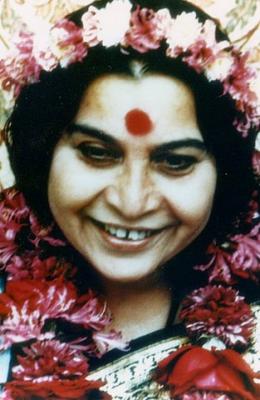
Question: How does one discard all the organization and useless activities (of Sahaja Yoga) and seek her (Holy Spirit/Adi Shakti) only in the Sahastrara (Kingdom of God)?
Answer: Silence on Self
Question: I am still unable to rid myself of catches and other chakra problems despite years of daily (Sahaja Yoga) footsoaking and treatments. What do I do now?
Answer: Silence on Self
Question: I am far from a Sahaja Yoga collective. How do I continue practicing Sahaja Yoga?
Answer: Silence on Self
Question: My collective leader has told me to leave Sahaja Yoga due to some personal problems. What do I do now?
Answer: Silence on Self
Question: Despite being years in Sahaja Yoga I do not agree with what our leaders are doing. I am thinking of leaving my collective. Can you suggest something that will help me continue on my own?
Answer: Silence on Self
Question: I am a Muslim who absolutely am against worshipping of any idol or image. How then is Sahaja Yoga and Shri Mataji compatible with Islam?
Answer: Silence on Self
Question: We are devout Christians who are very uncomfortable with Hindu rituals, and see the same in Sahaja Yoga. Is there any way we can do without such rituals?
Answer: Silence on Self
Question: You loudly claim on your website that all religions and holy scriptures preach the same message. I don't see such evidence. What have you got to say?
Answer: Silence on Self
Question: I do not want to meditate on anything non-Christian but agree that the Holy Spirit is feminine. How do I only worship the Holy Spirit but not the Adi Shakti?
Answer: Silence on Self
Question: My parents and husband are against worshipping Shri Mataji. How can I solve this serious family problem but still continue to practice Sahaja Yoga without their knowledge?
Answer: Silence on Self
Question: I completely agree with your belief that if you have to take a single step in any direction to seek the Divine you are going the wrong way. How and why did you reach this incredible conclusion only now despite spending so many years meditating, checking the scriptures and listening to Shri Mataji's speeches?
Answer: Silence on Self
Question: How can we spread Shri Mataji's message successfully? So many have failed all these years and Sahaja Yoga is very slow. Most of the seekers have never heard of Shri Mataji. Other than Her Divine Message what can we teach new seekers that will attract them?
Answer: Silence on Self
Question: I do not want to follow any religious organization or yoga teacher but still am interested in spirituality. You think that is possible?
Answer: Silence on Self
Question: My mother-in-law is totally against Shri Mataji and regards Her as just another false guru. But I know Shri Mataji is the Adi Shakti and want to continue. However, I do not want to antagonize my mother-in-law. Any suggestions?
Answer: Silence on Self
Question: I am a Sikh. I am completely against any Hindu ritual or worshipping of their idols and gods. Sikhism is completely against such practices. But Sahaja Yoga is also so full of such rituals and gods. What have you got to say, being a Sikh yourself?
Answer: Silence on Self
Question: I am getting somewhat ridiculed for my own spiritual experiences regarding the crown chakra and the divine feminine. People think I'm weird by emphasizing that the Devi is the true nature of brahman and it is creating doubt about my path (despite my own experiences). Should I continue with my meditations and ignore them or try to explain to them? What do you suggest?
Answer: Silence on Self
Question: There is so much information about yoga and meditation. I am so confused and do not know which path to take. What then is the truth? How do I attain it?
Answer: Silence on Self
Question: I have been in Sahaja Yoga for years but still do not know what is Self-realization. Can you tell me in detail what you understand by it?
Answer: Silence on Self
Question: I have been a SY for many years and some of us find shoe- beating and some rituals quite absurd. You also are against them. How then can we solve our subtle system problems without such treatments?
Answer: Silence on Self
Question: I am a Muslim living in Pakistan who want to practice Sahaja Yoga. But there are no centers here. How can I continue?
Answer: Silence on Self
Question: What will happen after Shri Mataji passes away? Will She still be in the photograph? Where will the vibrations come from then?
Answer: Silence on Self
Question: I have just started meditating on Shri Mataji in the Sahasrara but find it very difficult. Is there a better way?
Answer: Silence on Self
Question: I do not want to join Sahaja Yoga but believe in a number of Shri Mataji's teachings. Can you help me?
Answer: Silence on Self
Question: I am an established SYogini who am concerned at the way the organization is heading. However, I still want to spread Shri Mataji's teachings. What do you suggest I tell others?
Answer: Silence on Self
Question: I want to practice meditation but find it impossible to stop the thoughts. I value you opinion. If you don't mind my asking, but how do you do it?
Answer: Silence on Self
Question: What is the shortest and surest route to realize God?
Answer: Silence on Self
Question: Some religions claim that humans are divine in nature and that liberation is from within. Can you tell me how all this is realized in such a hectic and materialistic world?
Answer: Silence on Self
Question: As a SY I am concerned that after Shri Mataji takes Mahasamadhi there will great grief and sense of loss. How can I cope with this eventuality and continue my faith and devotion? Do I continue to meditate on Her photo even though She is not physically present anymore?
Answer: Silence on Self
Question: Jagbir, you are already telling us to discard Shri Mataji's photo and meditate on Her is the Sahasrara. A number of SYs have been offended by this and have left the forum. What makes you so sure you are right?
Answer: Silence on Self
Question: What is the most profound and deepest enlightenment you have discovered after all these years, based on the teachings of Shri Mataji? She also claims that all religions teach the same truth about the spirit. How is that so given all the religious differences and centuries-old rivalry?
Answer: Silence on Self
Question: Hi, man-made religions, sects and denominations are wide spread. So much misdeeds and divisions are committed and blood is shed in the name of God and religion. Is there a way to make humans realize that they are all worshipping the One and same Creator, no matter how different religious organizations have made God to be?
Answer: Silence on Self
Question: It seems that religions are all preaching about a God that is to be found only in their organizations. Why then is it that the Divine can only be realized through one's own experience? What and where is God then?
Answer: Silence on Self
Let there be Silence till the end of Navratri 8 October 2008
Yahoo forum post # 18729
Dear All,
Throughout my entire life till 1993, i.e., for my first 42 years of existence, I never knew there was such a thing as a Mother. Today, after 65 years of existence, I know there is nothing else besides the MOTHER.
Navratri is the annual celebration of the Mother. Life is the daily celebration of THE MOTHER ........... every second, hour, day, week ........... every season, year, decade, millennium .................. and every eon, every creation, every dissolution, and recreation.
i am declaring this Truth based on 2% of comprehension of THE MOTHER since 1993. That is the maximum percentage that, in my experience, can be ever attained by me. Only a fool will say 3%. Even 2% is suspect.
To attain this 2% mark requires years/decades of Knowledge and Enlightenment that comes directly from both the Paraclete/Mother without (Shri Mataji) and THE MOTHER within. Beyond the 2%, progress will only come from one overriding and essential fact - Silence!
There can be only one person, and one person only, to whom our present position and progress in enlightenment has been possible. Jesus! If not for Him none of us will be reading these lines. Period!
Happy Navratri to all,
jagbir
Yahoo forum post # 9999
jagbir singh
Oct 3, 2008
Dear All,
i consider "The Silence of Buddha and his Contemplation of the Truth" to be a masterpiece of enlightenment. May all read and learn from it. And nothing could be more auspicious than enlightenment during the nine holy days of Navratri that celebrates the Divine Mother who resides within all humans ..... and is our Self!
The last few days/weeks have been so extraordinarily enriching. I feel vindicated to have claimed only 2% enlightenment till date. Thanks.
regards,
jagbir

Gautama Buddha "Buddha was born in or around 563 B.C. into a religious milieu which had in its tradition two distinct approaches to the pursuit and personal discovery of the Truth. The first approach was that of sharpening one's intellect through active engagement in philosophical inquiries. Truth was sought through metaphysical debates and discussions. This approach placed strong emphasis on the power of rational knowledge. The second way was to enter into seclusion and solitude and to search for the Truth in personal silence. Here the emphasis was placed on renunciation, detachment, and an ascetical way of life. Eschewing the first approach, Buddha deliberately and decisively chose the second. Mauna, rendered in English as"silence," was the chief characteristic trait of this path.”- A. J. V. Chandrakanthan
SPIRITUALITY TODAY
Summer 1988, Vol.40 No. 2, pp. 145-156.
—————————————————————————————-
Fr. Chandrakanthan earned his doctorate in theology at St. Paul
University, Ottawa, where he also teaches Eastern Religions. This
article is based on a talk he gave in July, 1986, at the Christian
Meditation Centre, London.
—————————————————————————————-
A. J. V. Chandrakanthan:
The Silence of Buddha and his Contemplation of the Truth
In the life and teaching of the Buddha, true Silence leads to Truth
by avoiding both wordiness and wordlessness because such Silence is
Truth.
A philosopher once visited Buddha and asked him: "Without words,
without the wordless, will you tell me the truth?”
Buddha kept silence.
After a while the philosopher rose up gently, made a solemn bow and
thanked Buddha saying: "With your loving kindness, I have cleared
away all my delusions and entered the true path.”
When the philosopher had left, Ananda, a senior disciple of Buddha,
enquired: "O, Blessed one, what hath this philosopher attained?”
Buddha replied: “A good horse runs even at the shadow of the
whip!" (1)
This little anecdote eloquently illustrates the manner and method by
which Gautama Buddha sought to experience and express the truth.
Buddha's entire life could be briefly summed up as a relentless
search, a revolutionary discovery, and a revealing experience of
Truth. Stories and anecdotes attributed to him in popular Buddhist
legends, like the art, architecture, and sculpture that endeavor to
capture and contain the radical mystique of the person of Buddha,
often, if not always, present him as a serene, sober, and silent sage.
His first disciples and followers also perceived these qualities of
serenity, sobriety, and silence as indistinguishable traits of his
enlightened personality.
A brief exploration of our little anecdote will unfold to us the
importance and the necessity of Silence as an indispensable means
towards an interior experience of the Truth. Because as we shall
illustrate later, silence at the interior and exterior levels is a
sine qua non condition for both meditation and contemplation. In fact,
despite the doctrinal differences that separate the various schools
of Buddhism,(2) a remarkable unity exists among them in recognizing
the indispensability of silence as a powerful catalyst for dhyan or
meditation.
BUDDHA: THE SILENT SAGE
Buddha was born in or around 563 B.C. into a religious milieu which
had in its tradition two distinct approaches to the pursuit and
personal discovery of the Truth. The first approach was that of
sharpening one's intellect through active engagement in philosophical
inquiries. Truth was sought through metaphysical debates and
discussions.(3) This approach placed strong emphasis on the power of
rational knowledge. The second way was to enter into seclusion and
solitude and to search for the Truth in personal silence.(4) Here the
emphasis was placed on renunciation, detachment, and an ascetical way
of life. Eschewing the first approach, Buddha deliberately and
decisively chose the second. Mauna, rendered in English as "silence,"
was the chief characteristic trait of this path.
The word mauna is one of the few terms used commonly by all language
and religious groups in India. In religious treatises and traditions,
this word has a history of its own. Mauna, from which the noun muni,
meaning "sage" or "hermit" is derived, has a meaning exorbitantly
wealthier than its English counterpart "silence.” Mauna means
blissful calmness, joyous recollection, tranquil quietude, and
peaceful stillness.
In many of the legends and stories ascribed to Gautama Buddha,(5) he
is referred to as Sakyamuni. Literally this means, "the silent one of
the Sakya clan.” But the popular use of this name for the Buddha also
contains a dual significance. For besides referring to Buddha's clan,
in certain Indian languages the word sakya also refers to something
"graceful" or "pleasing.” Thus Sakyamuni can also mean "one who is
gracefully silent.”
Buddha began his search for the Truth as a muni walking on this
graceful path of mauna, whereas the philosopher referred to in the
above story symbolizes one who has chosen the first path, that of
rational inquiries and metaphysical investigations. A philosopher
paying a visit to Buddha to learn about the Truth was thus an
exceptionally uncommon event. And because the path opted for by
Buddha and the way chosen by the philosopher are two parallel lines
that never meet, one can only jump from one to the other. It was
indeed a rare event.
The decision of the philosopher to swerve from his path is indicative
of his tacit acknowledgement of the limitations and even failures of
reason and logic. It points to the philosopher's gross disappointment
with metaphysical discussions and debates. He had resolved to eschew
both, words (discourses and debates) and the wordless (signs and
gestures), and humbly requests Buddha to tell him of the Truth,
without using either words or the wordless.
Thus, in the penetrating eyes of the Lord Buddha, the philosopher had
become a receptacle ideally prepared to receive the treasure of the
Truth. In his humble request, Buddha astutely recognized the sense of
defeat and despair.
A great mystic like Buddha could easily sense the interior
preparedness of the philosopher, who had unreservedly surrendered
himself, with profound trust, docile humility, and audacious hope.
The very decision of the philosopher to come to him asking for an
experience of the Truth was already a revolutionary step of personal
conversion. Thus Buddha did not need any external force to teach him
or lead him to the Truth. Neither was there any need to prescribe
techniques and exercises or lessons on meditation. For Buddha, the
philosopher's sheer openness, the sublime emptiness that could now be
filled to the brim, was enough. He therefore compares this
philosopher to a good horse that is so watchfully alert and aware
that it begins to run if it merely sees the shadow of the whip. The
master has only to touch the whip and the horse nearly flies. Buddha
has only to look into the eyes of the philosopher and all the
teaching that can ever be imparted is readily received.
TRUTH AND SILENCE
In the stories and discourses attributed to Buddha, one can clearly
see a close link between Truth and Silence. Wherever Truth is
mentioned in reference to Buddha it is always said in relation to
Silence. In fact, popular Buddhist religious tradition attests that
whenever someone asked Buddha to explain the Truth, he invariably
answered by Silence. Thus he gave a new and deep significance to both
Truth and Silence. His silence was not a mere absence of speech or
words. Buddha's silence was eloquent! It was so blissful and ecstatic
that it always provided the perfect answer to those akin to the
philosopher in the above anecdote who sincerely sought for the Truth.
For Buddha, Silence as the inevitable path that leads to the Truth is
not distinct from the Truth itself. That is, as the way to the Truth,
Silence already contains the reality of the Truth. They are two
aspects of the same reality.(6) It is no wonder that even in Christian
tradition silence is spoken of as the language of God.(7) In Christian
terms, we may say that for Buddha, Silence is the sacrament of the
Truth.
Satya, the word translated "truth" In English, is one of the oldest
words in the Indian religious heritage. It too has a wealth of
meanings. Derived from the root sat, meaning "being," "existence,"
"pure," "holy," "perfect;" (8) etc., satya signifies the Truth in all
its unlimited perfection and plenitude. As the ground of all
existence, satya can only be experienced through the medium of
Silence. It cannot be expressed. The moment one tries to express it,
one runs the danger of falsifying it, of rendering it asatya,
"untruth.” The fountain of Silence is the sole medium that is capable
of delivering the Truth.
Buddha did not communicate any knowledge with his Silence, but he
nevertheless communed with seekers of the Truth. He did not offer
them a part of his knowledge, but imparted to them an aspect of his
being. He used neither words nor the wordless (signs and gestures).
Rather, the language he used was Silence in the sense of an effulgent
mauna. That is why even a philosopher who counted rational power as
the sole source of true knowledge could accept the failure of logic
and reason and surrender to Buddha, asking him for the Truth in a
medium that does not involve words and the wordless. Perhaps the
experience disclosed to the philosopher both the poverty of words and
concepts and the paucity of wordlessness, thereby motivating him to
choose a medium that transcends them.
Buddha's Silence was not wordlessness or noiselessness. It had a
transforming power, permeating and filling the atmosphere around him
with such intensity that people seated at his presence experienced
"The ineffable and the inexplicable.”His Silence had no movement,
yet people around him moved closer to the Truth just by being in his
presence, permeated and filled by the effulgence of his joyous
stillness. His Silence was contagious. It was like the unseen powers
of a magnetic field or the invisible sound waves that travel in the
atmosphere.
The close affinity that is said to enjoin Truth with Silence is not
uncommon in the mystical traditions of other religions including
Christianity. Whether it be in the Sufism of Islam or in the Hasidim
of Judaism, silence is always referred to as the prerequisite for an
interior experience of the divine. Silence is often eulogized as the
language of the heart. Buddha's Silence reveals to us the nature and
significance of an ideal form of silence. This becomes more evident
when we contrast the mauna with our ordinary experience of silence.
UNQUIET SILENCE
The silence which most of us have experienced or know of is an
exterior absence of words or a stillness from noise. During such an
experience we may not use words audibly and externally but the mind
is unquiet, filled with words and noise, ideas, questions, desires,
doubts, and conflicts. All this clouds and confuses the mind; silence
is only on the surface. Quietude is only on the periphery. It is only
a mirage or a deceptive appearance of Silence, because there is
calamity inside and a pretense of calm outside. Such silence can
easily be tilted by the least external noise. Instead of resulting in
peace this forced stillness will explode into annoyance and
irritation.
SPEECHLESS SILENCE
Persons under sudden shock or deeply excited by fear also experience
a brief spell of silence. This silence may be wordless or it may
render someone momentarily speechless. But there is no lasting peace
or quietude. It only causes confusion and chaos, besides accelerating
anxiety and tension. It is a silence thrust onto a person from
outside and therefore has no natural flow or spontaneity.
TRANQUIL SILENCE
Buddha's Silence is of a third category. His Silence is not forced by
any internal or external factors. It is natural and spontaneous,
active and sublime. It wells up from the depths of his personality
and overflows with a certain rhythm. It is mauna in the fullest sense
of the term. It radiates energy and emanates vitality. Peace and joy
are inseparably interwoven in its very essence. This Silence is not
negative; there is no"Absence"of something. It is wholly positive,
pervading the entire atmosphere around him, so that he can just sit
without uttering anything and the people around him can receive
wisdom. It is this pattern of Silence that the early Buddhist
sculptors and artists endeavored to convey in their images and
replicas of the Buddha.
Buddha's Silence was the result of a profound harmony within himself
and with the world outside. It pointed to a deep concord between the
center and periphery of his self and his states of awareness or
consciousness. Buddhism refers to seven layers of such consciousness.
A joyous quietude is attained when these seven layers throb
harmoniously, pulsating in sublime awareness. Buddha is silent
because he knows the narrow boundaries of rational knowledge and the
blind alleys of metaphysical queries. He knows the frailty and
feebleness of words and concepts. His discovery of the language of
Silence helped him dispel the inner darkness and void created by a
rational thirst for knowledge.(9)
SILENCE AND CONTEMPLATION
As we mentioned earlier, in the Indian languages a contemplative is a
muni. Literally, this means"The silent one.”Muni refers to one who
is so totally and intensely silent, calm, serene, and recollected
that his very presence becomes a pool of energy, radiating an
ineffable spirit of stillness. Buddha was a muni par excellence. The
strength of his contemplation was rooted in his power of Silence,
which led him to enlightenment.
In the Eastern contemplative tradition, the act of doing something is
already the thing done. The goal of life for Buddha was the act of
living it. Thus Silence as the way to the Truth is itself the Truth.
In fact, in Buddha's teaching the four-fold salvific truth(10)
incorporates"The path"As one of its constituents, while"The
eightfold path" (11) leads to the realization of the Truth.
Buddha persistently refused to define or describe the Truth. It can
only be experienced and assimilated. It was part of his very being.
It cannot be communicated by words, but can only be shared with
someone who possesses the right prerequisites for receiving it into
his or her being.
People who came to Buddha with adequate inner preparation received at
least some experience of the Truth through their trustful silence.
Otherwise it is hard to give any proper interpretation to the"cult
of meditation"that is integral to Buddhism and eventually blossomed
into Zen. Paintings and sculpture over two thousand years old portray
Buddha as a serene and silent sage, a phenomenon found in almost all
countries where Buddhism claims adherents.(12) It further confirms that
this elegant and eloquent trait of Buddha's personality had a
universal attraction and appeal for over the millennia.
In the Christian mystical and contemplative tradition, silence is
strongly recommended as an ingredient of the religio-spiritual quest.
The Desert Fathers and the later monastic tradition stress the role
of silence for interior spiritual growth. St. Benedict advises his
followers," Monks ought to be zealous for silence at all
times ...” (13) Silence creates an atmosphere and an attitude for
listening and receptivity, for response and recollection. Only thus
can the Truth, that is, the Divine Reality, be able to permeate our
entire being.
EMPTINESS
A major question arises: how is this ideal form of Silence to be
embraced? Can anyone experience it? Buddha himself provides the
answer. It lies in the Buddhist understanding of the richness of
emptiness.(14) As long as a person is willing to become empty(15) of
all forms of desires and attachments, both within and without, and
learns to avoid using any self-suppressive force, the path of silence
is very accessible. It should be undertaken in an attitude of total
self-surrender, humility, and trust. Otherwise it is very hard to
quiet the mind, which is always clouded with thoughts and concerned
with the deceptive power of the ego. This is possible only by
incessant practice induced by the desire to reach into the very core
of one's"Inner-self.”
A story of one of the Buddha's disciples can help us to discern how
the process of achieving emptiness is an ideal means of attaining the
Truth:
Subhuti was one of Buddha's disciples. He was able to understand the
potency of emptiness: the viewpoint that nothing exists except in its
relationship of subjectivity and objectivity.(16)
One day, when Subhuti was sitting under a tree in a mood of sublime
emptiness, flowers began to fall around him.
"We are praising you for your discourse on emptiness;' the gods
whispered to him.
'But I have not spoken of emptiness;' said Subhuti.
"You have not spoken of emptiness, we have not heard emptiness,"
responded the gods.”This is true emptiness.”
And the blossoms showered upon Subhuti like rain.(l7)
This is the only story that exists about Subhuti. There is nothing
remarkable about him simply because he was one of Buddha's numerous
disciples. Tradition affirms that already during his lifetime, Buddha
had some outstanding persons, kings and scholars, as his disciples.
But the gods did not choose them. They chose the unknown Subhuti.
Herein lies the key to the Buddhist notion of emptiness, which can be
understood and cherished only by being empty.
Like tranquil silence, emptiness cannot be expressed. The moment an
effort is made to express it, it loses its value. It is no longer
emptiness. Because in"true emptiness"even the experience
disappears. This is the significance of the Buddhist notion of
sunyata, the attitude that Buddha had when he left the palace and
chose to become a sage. It is not a negative emptiness, but a sublime
emptiness that becomes the firm foundation on which the edifice of
silence can stand.
For a few elusive moments, all of us have had glimpses of emptiness
and experiences of silence. But as long as the mind is there, or the
ego is there, such moments pass like a dream. The closer we move
towards silent emptiness, the more elusive it becomes. To grasp this
moment one has to be securely rooted in openness and humility. Only
then can we who are temples of the Holy Spirit can become the
sanctuary of the Truth.
JESUS AS THE WAY AND THE TRUTH
The striking affinity that binds truth with silence is not uncommon
in Christian tradition. We come to experience Jesus the Truth by
following Jesus the Way.(18) The challenge is to travel with Jesus in
our own historical context. Through this same process we can also
come to experience Jesus as the Truth.
In the Gospel of John, Jesus reveals the subtle dimensions of the
Truth when he says, "The Truth shall set you free" And "you shall
worship in Spirit and Truth.”This gospel also presents an incident
not very dissimilar to that of the story at the beginning of this
article. On the very eve of Jesus' death, a knowledgeable Roman
governor asked him, "What is Truth?” (John 18:38). Little did Pilate
realize that Truth in its plenitude was standing before him. Jesus'
answer to Pilate was very similar to that of Buddha to the
philosopher—communing or conveying the Truth in Silence. But
unlike the philosopher, Pilate lost the greatest opportunity he was
ever afforded.
SILENCE TODAY
More than ever before, people today feel the need for silence,
meditation, and contemplation. The growing number of Christian
mediation groups in Europe and North America, like the mushrooming of
ashrams and hermitages in South Asia, very clearly indicates their
deep spiritual longing for an interior experience of the Truth
through a process of silence and stillness.
Mahatma Gandhi entitled his autobiography Satya Sodhana, "an
experiment with Truth.” Regularly observing one day of the week as a
day of mauna viradha, "fasting by silence," Gandhi described it as
one which filled him with the vitality and strength necessary for him
to generate Truth to others. For him, satyagraha, "insistence on
truth," was an inseparable part of life. Gandhi is also reported to
have said that on this day of silent fast, he was more in contact
with his inner self and feelings than with the reality of God. It was
thus not so much a day of prayer as one of personal reconciliation
with his inner conflicts. When these conflicts are resolved, prayer
blossoms as its joyous result. Such prayer gives peace and solace,
comfort and consolation. Prayer and meditation are not just ways of
learning to relax with God.
Today's world is a world of the outer. It has sought and bought the
outer at the cost and expense of the inner. Hence the need to return
to the source and the center of ourselves in Silence and solitude to
discover the treasure of the Truth buried within. As a priceless
statement attributed to Buddha has it, "As long as I had no knowledge
of the treasures within me, all outside things seemed valuable. Now
since I have found the diamond within, all earthly diamonds have
paled into insignificance.”
A. J. V. Chandrakanthan:
The Silence of Buddha and his Contemplation of the Truth
Notes
1) Paul Reps, (ed.), Zen Flesh, Zen Bones (London: Penguin Books,
reprinted 1982), pp. 119-120.
2) The major schools of Buddhism are known as Mahayana (practiced in
China, Japan, Korea, and Vietnam), Theravada or Hinayana (practiced
in Burma, Ceylon, India, Laos, and Campuchea), Ch'n or Zen (China
and Japan) and Tibetan Buddhism.
3) R.E. Hume, (ed.) The Thirteen Principal Upanishads (London: Oxford
University Press, revised and reprinted, 1934), p. 30. See also
Brihad-Aranyaka Upanishad, 5.1 to 6.5 and Mundaka Upanishad, 3.1.1 to
3.2.11.
4) For some pertinent religious texts see R.M. Panikkar, (ed.),
Matranmanjari: The Vedic Experience, (University of California Press,
1977), pp. 250, 264, 412, 629-630.
5) Gautama was the family name of Buddha. Siddhartha was the name
given to him by his parents. "Buddha," in fact, is a title rather
than a name, meaning "The blessed" or "enlightened one.” The name
Sakyamuni is used in later legends and literature.
6) See Joel Giallanza, "Silence as a Second Language" in Review for Religious, 46 (1986: 453-457.
7) Ibid.
8) R. M. Panikkar, op. cit., pp. 60-66, 110-111, 123-124, 716-720, and
740-742.
9) Ninian Smart, The Religious Experience of Mankind (London: Collins,
1986), pp. 109-117.
10) Buddhist traditions maintain that "The Four Noble Truths" were
pronounced by Buddha when he delivered his first sermon. Briefly the
Four Noble or Great Truths are: 1) Sorrow is associated with all
stages of life (i.e. birth, aging, death etc.). 2) Selfish desire is
the cause of all sorrow. 3) Emancipation from sorrow is possible only
by abandoning all selfish desires. 4) The Eightfold Path is the means
by which human beings can overcome all selfish cravings or desires. I
have translated the word duhkka as "sorrow" but it also
means "misery," "pain," and "anguish.” For more on this see P.L.
Narasu, The Essence of Buddhism (Delhi: Bharatya Publishing House,
1979), pp. 128-133.
11) The Eightfold Path is said to contain the scheme of spiritual
self-development leading to enlightenment. It consists of 1) right
understanding, 2) right aspiration, 3) right speech, 4) right action,
5) right pursuits (including means of livelihood), 6) right effort,
7) right attitudes, and 8) right concentration or contemplation.
12) The paintings and sculptures of Buddha found in Burma, India, Sri
Lanka, Japan, Thailand, Korea, and Vietnam are illustrations of this
phenomena.
13) Rule of St. Benedict, Chap. 42.
14) The word sunyata is used in Buddhism to refer to the notion of
emptiness. The religious significance of this term is very much
similar to that of the Greek word kenosis, used by St. Paul, (esp.
Phil. 2:6). Sunyata means emptiness as openness, freedom and
fullness. See A.J.V. Chandrakanthan, "The Richness of Emptiness in
Religious Life," a talk given on the occasion of the Silver jubilee
celebrations of Sr. Anne Leonard, R.S.C.J., Canadian Provincial of
the Religious of the Sacred Heart of Jesus, (mimeographed), Ottawa,
1987, pp. 2-9.
15) For more on the Buddhist understanding of emptiness, see F.J.
Streng, Emptiness: A Study in Religious Meaning (Nashville, TN:
Abingdon Press, 1967), pp. 43-81.
16) In Buddhism and Zen, the distinction between subjectivity and
objectivity means that reality is to be understood in terms of its
impermanent relationships, e.g. a middle-class rich man compared to a
millionaire is a poor man.
17) Paul Reps, op. cit., p. 43.
18) Jon Sobrino, The True Church and the Poor (Maryknoll, NY: Orbis
Books, 1984), p. 24.
Apokalypsis: The fulfillment of eschatological instruction by the Paraclete in the Age to Come promised by Jesus at the Last Supper
An apocalypse (Greek: apokalypsis meaning “an uncovering”) is in religious contexts knowledge or revelation, a disclosure of something hidden, “a vision of heavenly secrets that can make sense of earthly realities.” (Ehrman 2014, 59)
“An apocalypse (Ancient Greek: apokalypsis ... literally meaning "an uncovering") is a disclosure or revelation of great knowledge. In religious and occult concepts, an apocalypse usually discloses something very important that was hidden or provides what Bart Ehrman has termed, "A vision of heavenly secrets that can make sense of earthly realities". Historically, the term has a heavy religious connotation as commonly seen in the prophetic revelations of eschatology obtained through dreams or spiritual visions.” Wikipedia 2021-01-09

Total number of recorded talks 3058: Public Programs 1178, Pujas 651, and other (private conversations) 1249
“The Paraclete will come (15:26; 16:7, 8, 13) as Jesus has come into the world (5:43; 16:28; 18:37)... The Paraclete will take the things of Christ (the things that are mine, ek tou emou) and declare them (16:14-15). Bishop Fison describes the humility of the Spirit, 'The true Holy Spirit of God does not advertise Herself: She effaces Herself and advertises Jesus.' ...
It is by the outgoing activity of the Spirit that the divine life communicates itself in and to the creation. The Spirit is God-in-relations. The Paraclete is the divine self-expression which will be and abide with you, and be in you (14:16-17). The Spirit's work is described in terms of utterance: teach you, didasko (14:26), remind you, hypomimnesko (14:26), testify, martyro (15:26), prove wrong, elencho (16:8), guide into truth, hodego (16:13), speak, laleo (16:13, twice), declare, anangello (16:13, 14, 15). The johannine terms describe verbal actions which intend a response in others who will receive (lambano), see (theoreo), or know (ginosko) the Spirit. Such speech-terms link the Spirit with the divine Word. The Spirit's initiatives imply God's personal engagement with humanity. The Spirit comes to be with others; the teaching Spirit implies a community of learners; forgetful persons need a prompter to remind them; one testifies expecting heed to be paid; one speaks and declares in order to be heard. The articulate Spirit is the correlative of the listening, Spirit-informed community.
The final Paraclete passage closes with a threefold repetition of the verb she will declare (anangello), 16:13-15. The Spirit will declare the things that are to come (v.13), and she will declare what is Christ's (vv. 14, 15). The things of Christ are a message that must be heralded...
The intention of the Spirit of truth is the restoration of an alienated, deceived humanity... The teaching role of the Paraclete tends to be remembered as a major emphasis of the Farewell Discourses, yet only 14:26 says She will teach you all things. (Teaching is, however, implied when 16:13-15 says that the Spirit will guide you into all truth, and will speak and declare.) Franz Mussner remarks that the word used in 14:26, didaskein, "means literally 'teach, instruct,' but in John it nearly always means to reveal.” (Stevick 2011, 292-7)
The Holy Spirit as feminine: Early Christian testimonies and their interpretation,
Johannes van Oort, Radboud University, Nijmegen, The Netherlands
Department of Church History and Church Polity, Faculty of Theology, University of Pretoria, South Africa
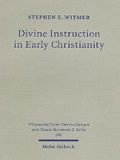
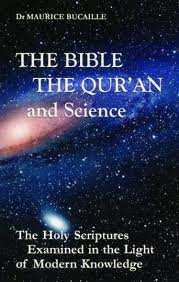
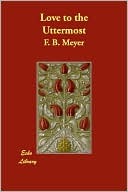
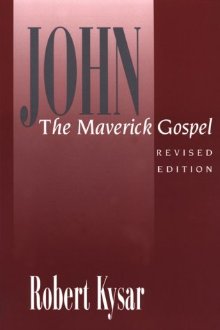
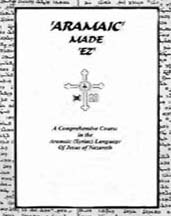
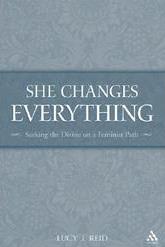
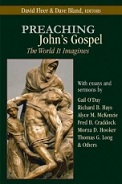

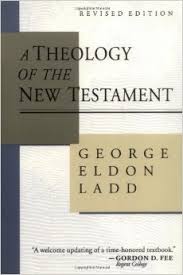
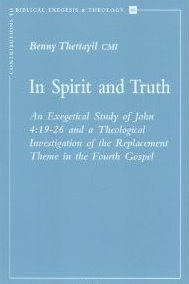



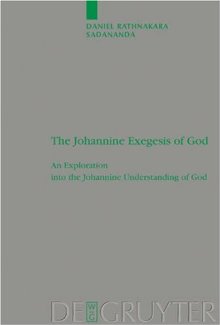

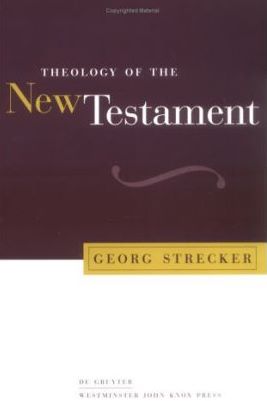

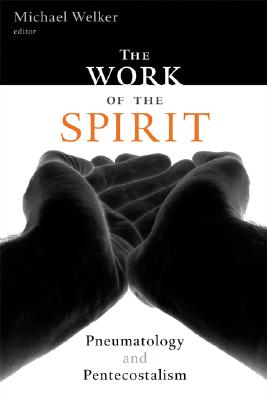
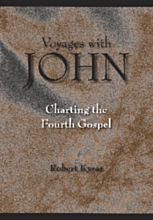




 “The teaching of the Paraclete, as the continuation of Jesus' teaching, must also be understood as the fulfillment of the promise of eschatological divine instruction.”
“The teaching of the Paraclete, as the continuation of Jesus' teaching, must also be understood as the fulfillment of the promise of eschatological divine instruction.”Stephen E. Witmer, Divine instruction in Early Christianity
“Jesus therefore predicts that God will later send a human being to Earth to take up the role defined by John .i.e. to be a prophet who hears God's words and repeats his message to man.”
M. Bucaille, The Bible, the Qur'n, and Science
“And when Jesus foreannounced another Comforter, He must have intended a Person as distinct and helpful as He had been.”
F. B. Meyer, Love to the Utmost
“The Paraclete has a twofold function: to communicate Christ to believers and, to put the world on trial.”
Robert Kysar, John The Meverick Gospel
“But She—the Spirit, the Paraclete...—will teach you everything.”
Danny Mahar, Aramaic Made EZ)
“Grammatical nonsense but evidence of the theological desire to defeminize the Divine.”
Lucy Reid, She Changes Everything
“The functions of the Paraclete spelled out in verses 13-15... are all acts of open and bold speaking in the highest degree.”
David Fleer, Preaching John's Gospel
“The reaction of the world to the Paraclete will be much the same as the world's reaction was to Jesus.”
Berard L. Marthaler, The Creed: The Apostolic Faith in Contemporary Theology
Bultmann calls the “coming of the Redeemer an 'eschatological event,' 'the turning-point of the ages.”
G. Ladd, A Theology of the New Testament
“The Paraclete equated with the Holy Spirit, is the only mediator of the word of the exalted Christ.”
Benny Thettayil, In Spirit and Truth
“The divine Paraclete, and no lessor agency, must show the world how wrong it was about him who was in the right.”
Daniel B. Stevick , Jesus and His Own: A Commentary on John 13-17
Stephen Smalley asserts that “The Spirit-Paraclete ... in John's Gospel is understood as personal, indeed, as a person.”
Marianne Thompson, The God of the Gospel of John
“The Messiah will come and the great age of salvation will dawn (for the pious).”
Eric Eve, The Jewish context of Jesus' Miracles
“The remembrance is to relive and re-enact the Christ event, to bring about new eschatological decision in time and space.”
Daniel Rathnakara Sadananda, The Johannine Exegesis of God
“The Spirit acts in such an international situation as the revealer of 'judgment' on the powers that rule the world.”
Michael Welker, God the Spirit
The Paraclete's “Appearance means that sin, righteousness, and judgment will be revealed.”
Georg Strecker, Theology of the New Testament
“While the Spirit-Paraclete is the true broker, the brokers they rely on are impostors.”
T. G. Brown, Spirit in the writings of John
“The pneumatological activity ... of the Paraclete ... may most helpfully be considered in terms of the salvific working of the hidden Spirit.”
Michael Welker, The work of the Spirit
“The pneuma is the peculiar power by which the word becomes the words of eternal life.”
Robert Kysar, Voyages with John
“The gift of peace, therefore, is intimately associated with the gift of the Spirit-Paraclete.”
Francis J. Moloney, The Gospel of John
“This utopian hope, even when modestly expressed, links Jesus and the prophets to a much wider history of human longing.”
Harvey Cox, The Future of Faith
“Because of the presence of the Paraclete in the life of the believer, the blessings of the end-times—the eschaton—are already present.”
Robert Kysar, John
“They are going, by the Holy Spirit's power, to be part of the greatest miracle of all, bringing men to salvation.”
R. Picirilli, The Randall House Bible Commentary
“The Kingdom of God stands as a comprehensive term for all that the messianic salvation included... is something to be sought here and now (Mt. 6:33) and to be received as children receive a gift (Mk. 10:15 = Lk. 18:16-17).”
G. Ladd, A Theology of the New Testament
Disclaimer: Our material may be copied, printed and distributed by referring to this site. This site also contains copyrighted material the use of which has not always been specifically authorized by the copyright owner. We are making such material available to our readers under the education and research provisions of "fair use" in an effort to advance freedom of inquiry for a better understanding of religious, spiritual and inter-faith issues. The material on this site is distributed without profit. If you wish to use copyrighted material for purposes other than “fair use” you must request permission from the copyright owner.